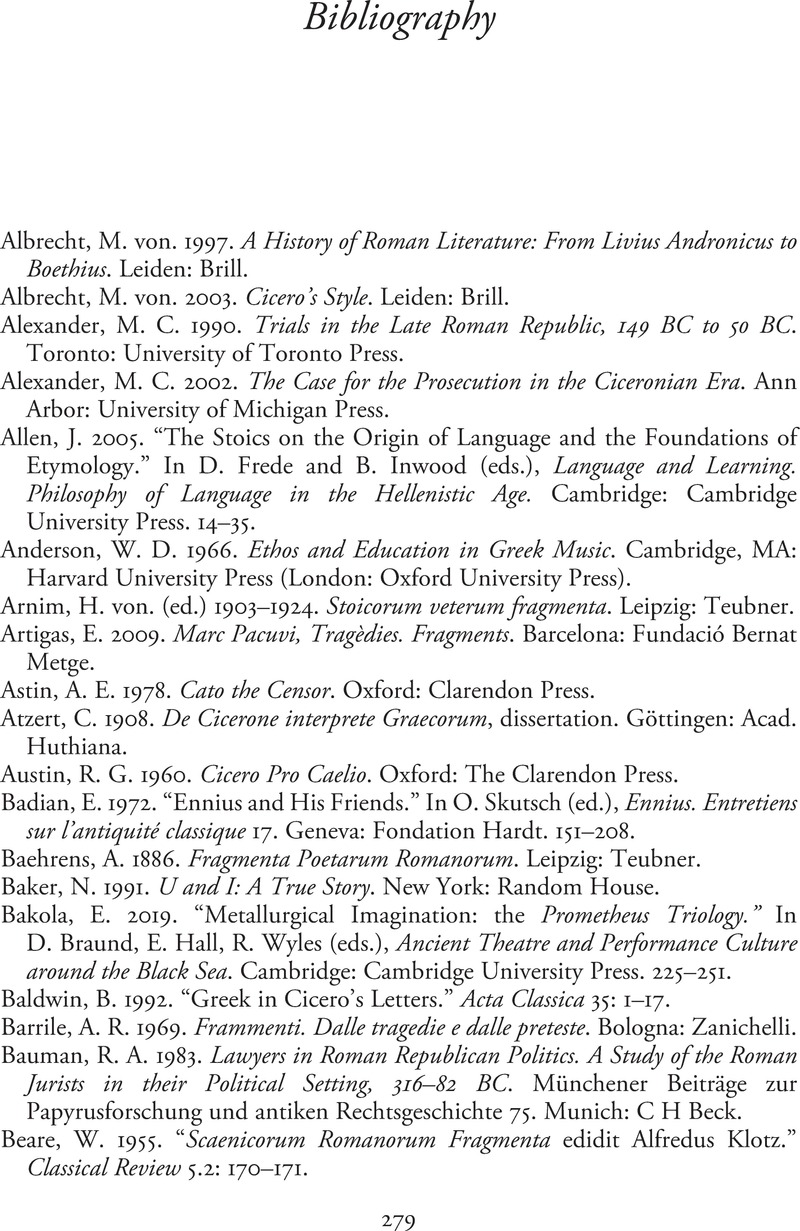Book contents
- Cicero and the Early Latin Poets
- Cicero and the Early Latin Poets
- Copyright page
- Epigraph
- Dedication
- Contents
- Acknowledgements
- Note on Editions of Fragments
- Texts and Abbreviations
- Introduction “All Minds Quote”
- Chapter 1 Cicero and the Poets
- Chapter 2 Poetic Citation by Ciceronian Genre
- Chapter 3 Roman Comedy and Scholarship
- Chapter 4 Singing in Cicero
- Chapter 5 Poetry as Artefact
- Envoi
- Note to Appendices
- Bibliography
- Index of Passages Discussed
- General Index
- References
Bibliography
Published online by Cambridge University Press: 21 April 2022
- Cicero and the Early Latin Poets
- Cicero and the Early Latin Poets
- Copyright page
- Epigraph
- Dedication
- Contents
- Acknowledgements
- Note on Editions of Fragments
- Texts and Abbreviations
- Introduction “All Minds Quote”
- Chapter 1 Cicero and the Poets
- Chapter 2 Poetic Citation by Ciceronian Genre
- Chapter 3 Roman Comedy and Scholarship
- Chapter 4 Singing in Cicero
- Chapter 5 Poetry as Artefact
- Envoi
- Note to Appendices
- Bibliography
- Index of Passages Discussed
- General Index
- References
Summary

- Type
- Chapter
- Information
- Cicero and the Early Latin Poets , pp. 279 - 294Publisher: Cambridge University PressPrint publication year: 2022

